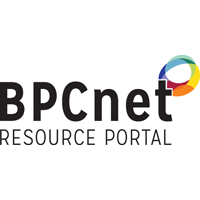Computing Researchers Respond to COVID-19: Contact Tracing for All? Bridging the Accessibility Gap for Contact Tracing
Automated, proximity-based contact tracing apps use Bluetooth to identify who is near them. In theory, this is a great solution that can be efficiently deployed widely (albeit with many privacy and protocol considerations addressed here), however the assumption is that people have access to mobile phones with Bluetooth and use technology similarly.
We know that not everyone has access to smartphones. Pew notes that approximately 70% of Americans who make less than $30,000 a year own a smartphone. Similar stats are seen for Americans who live in rural areas and those with high school education or lower. Whereas just over 50% of older adults 65 and older have smartphones.
Even if people do have phones, we know that people do not necessarily use their technology similarly. The current automatic contact tracing apps assume technology maps 1:1 with people. I’ve seen in my own work where participants share smartphones depending on which family member needs the most connectivity within a certain time period. Thus, to be effective in these situations, a contact tracing app would have to log who the user is during the contact time.
Similarly, there is an assumption that participants have their Bluetooth on all the time. In our work, participants often reported turning Bluetooth and wifi off to save battery power. This was especially true where participants were working long days and needed their phone to have enough battery to connect with loved ones (e.g., a cashier at the grocery store; facilities staff at a hospital).
Even if someone does have a smartphone, they may not have the hardware or OS needed to use the automatic contact tracing apps. Current Apple contact tracing runs on iPhones released in the last 4 years and Google requires Android 6. Although on average, Americans update their phones a little over every 2 years (27.7 months in 2018 – up two months from a 2016 poll), we know that over half of Americans only replace their phones when they no longer work. The apps will most likely be updated to accommodate more phones, however Bluetooth contact tracing will still be a major power draw meaning that people will not be able to use it for a long period of time (e.g., a work shift). This means that a large subset of the population will be left out of utilizing automatic contact tracing apps.
When we consider these pieces all together, we know that lower socioeconomic communities have been hardest hit with COVID19 and rural communities are at risk for lower resources to deal with COVID19, thus contact tracing is critical for the same populations who most likely will not have access to automatic contact tracing apps.
So what can the computing community do now?
The computing community must ensure the majority of people, especially those most at risk, can use contact tracing.
If fully automated contact tracing is selected by a state, we must ensure the systems can be used by everyone. Apps must be available to download on all currently available phones or we have to provide hardware that people can use to participate (e.g., a bluetooth beacon that communicates to the user via text messaging).
Decision makers should consider alternatives, such as digitally assisted contact tracing by harnessing GPS functionality that locally tracks where users have been so that a human contact tracing specialist can work with a person who tests positive to see where they have been and who has to be contacted. Memory recall is imperfect – especially when one is asked who they have been in contact with over the last two weeks. If an app were to log where a person has been, then the person who was recently diagnosed with COVID19 could use the app to remember who they were with at each location.
In addition, we should have review panels with diverse community members and experts to ensure wherever people encounter contact tracing systems – app or human – their question, concerns, and needs are being addressed.
Computing has incredible potential to contribute to keeping people safe, connected, and informed during this pandemic. We must continue to rise to the challenge to ensure everyone can be safe and confident in participating in this critical intervention to slow the spread.










